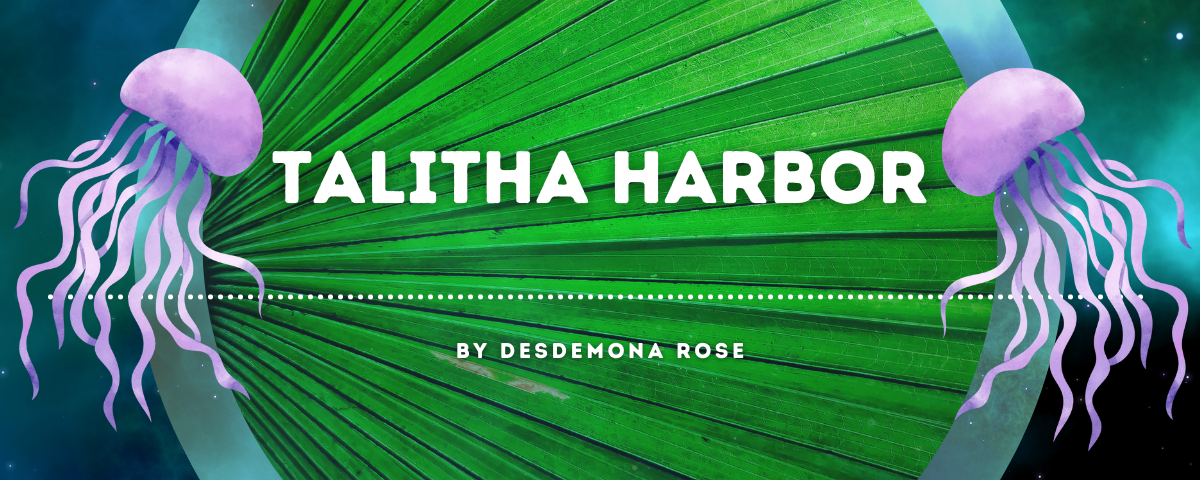Seedpod Skorpios
Seedpod Skorpios are land dwelling crustaceans native to Pure Dawn Island. They can grow up to 18 cm long. They have a outer shell that looks like a pitted upside down clam shell, hinged at the top and over their bodies. The creature inside is long bodied with tall legs, and a needled tail that they can use to deliver venom. Though named with the Earthian Greek word for scorpion, their tails don't curled up in the same manner. Instead they are either straight, our curled down into their shell. The tails are also closer in diameter to their bodies compared to the scorpion's wider body and more narrow tail.
The Talithans knew these creatures existed before the The Pure Dawn Collective made the island their home more than 700 sols ago. They were not used for their medicinal properties until sol 985. Councillor Pema Pomare, while still working for the Vocation of Preservation as an Ecologist, studied the species in depth and was able to devise a way for them to be raised.
Basic Information
Anatomy
Seedpod Skorpios have bodies that are formed in their harden shells. The interior of their body, inside the shell, is narrow. They are sometimes called walking reeds because their bodies are narrow and green-brown. They have six legs and two smaller appendages up front that can be used as arms or a fourth set of legs. Their heads are small, seeming to blend right into their bodies and they have two very long hair, thin antennae.
A clam shell shaped exoskeleton hides most of their body. It’s attached along the back of the main body stock, where a spine would be if they had one. Their head and tail are not attached.
The shell, a mottled tan and brown, is a combination of both calcite and calcium carbonate. It’s not as hard as a mollusk shell. Since these are land dwelling creatures, they don’t need especially tough scales. The most dangerous land animal would be a crab or something with similar pincher strength. However, these creatures live in the forests where those creatures don’t exist.
Most known Talithan land animals haven’t evolved past the arthropod stage. One species, which has been loosely classified as an amphibian, has been found. But everything else is either from the sea or has an exoskeleton. The shells of the seedpods are strong enough to protect from the native species they live near.
Growth Rate & Stages
These are egg laying creatures using external fertilization. There’s a large rocky and shallow river that runs through Pure Dawn Island. Laying their eggs in the hidden crevices along the shallow parts of this body of water is their most ideal laying ground. They’ve been known to spore in large puddles, with mixed results. The eggs need moisture and some kind of concealment for the best results.
It’s not known how the females alert the males when it’s time for them to lay. The current theory is a scent or pheromone that can’t be detected with the technology available to the Talithans. When it’s time to lay, the females will attract several males. They’ll all attempt to fertilize the eggs by spraying their sperm over them. Before mating, the males will consume a significant amount of water which is filtered through their bodies and used for this purpose. It’s the one time where the males may run into each other, triggering tail attacks. though they still typically miss and simply hit each other’s shells.
The newly hatched skorpios are nearly microscopic and live in the water. Their main predators are the few native water dwelling arthropods of Pure Dawn Island and flying insects that can skim along the water. There are no fish species native to the shallow Pure Dawn River.
The larvae have no shells and, when they’re large enough to be seen, look like tiny floating hairs. When ready, they will find soft spots in the riverbed and borrow. They’ll undergo a metamorphosis then and develop their first shell. It is soft and small. But once they emerge, it will finish growing into the full adult shell.
Dietary Needs and Habits
Seedpod Skorpios are mostly vegetarian, snacking on various plants. If they come across a dead member of their species, they will sometimes nibble parts of the shell, but they don't eat the soft body. They've never been observed eating other arthropod bodies, but will occasionally chew on other shells. They are particular to species that are similar to theirs in structorial make-up.
Additional Information
Perception and Sensory Capabilities
Skorpios sense their world through their antennae and sensory cells on the bottoms of their limbs. They have small eye-like cells that will sense light and dark. A sudden change in light will cause them to close their shells. They also have small sensory cells on the back of their tails and, when triggered, will strike. It's all automated reflexes.
Their antennae are delicate enough that they can touch another's tail and not trigger an attack response. If two of them happen to walk into each other's back-ends, however, they will strike. When observed, they tend to hit their shells more often than the other's body, preventing most death by this route.
Conservation Status
The Thirteen Vocations, in all three Great Cities, have an agreement with the Pure Dawn Collective not to harvest anything from the island they reside on. Being able to successfully raise the Skorpios off site allowed the cities to honor this agreement while also being able to take advantage of the valuable resources these animals provide.
Discovered by



Comments